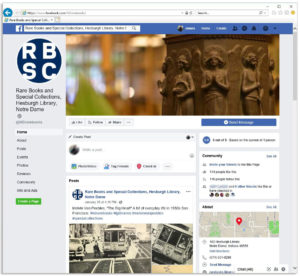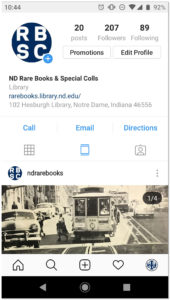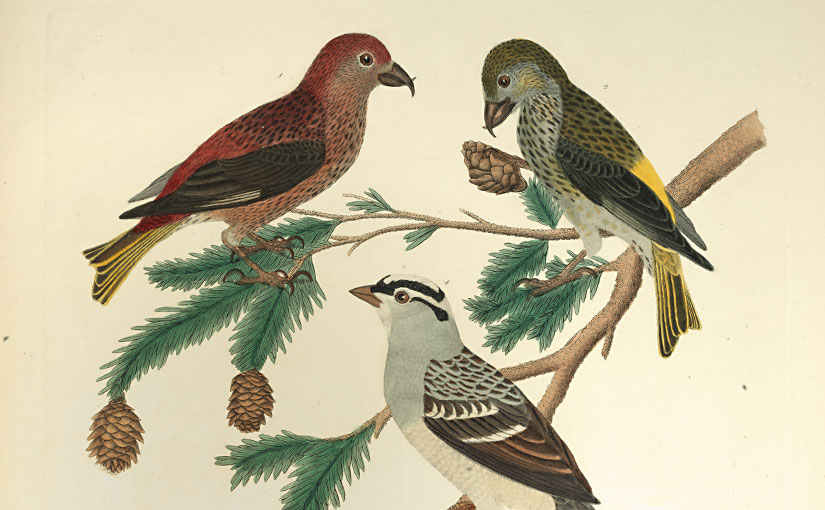Please join us for the following event being hosted in Rare Books and Special Collections:
Thursday, February 21 at 5:00pm | The Italian Research Seminar: Presentations by M.A. Students in Italian: Gabriella Di Palma and Guido Guerra.
Sponsored by Italian Studies at Notre Dame.
Tuesday, February 26 at 3:30pm | Book Celebration: Roman Sources for the History of American Catholicism, 1763–1939.
Welcome and remarks by: Diane Walker (Hesburgh Libraries); Angela Fritz (University Archives); Jean McManus (Hesburgh Libraries); Stephen Wrinn (Notre Dame Press); and Kathleen Sprows Cummings (Cushwa Center). Refreshments to follow.
Sponsored by Hesburgh Libraries, University Archives, Cushwa Center for the Study of American Catholicism, and Notre Dame Press.
Thursday, February 28, 9:00am to 11:00am | Documenting Girls and Girlhood — Library Collections on Display.
In association with the International Girls Studies Association meeting, and the University of Notre Dame’s International Gender Studies Conference, Hesburgh Libraries’ Rare Books and Special Collections will host a display on the culture, literature, and history of girls and girlhood. Drawing on the Irish and American collections, there will be a fascinating array of books, manuscripts, periodicals, posters and artifacts demonstrating religious, rebellious, domestic, and literary girlhoods. Rachel Bohlmann, American history and gender studies librarian, and Aedín Clements, Irish studies librarian, will be available to provide tours and answer questions.
The spring exhibit, As Printers Printed Long Ago. The Saint Dominic’s Press 1916-1936, curated by Dennis Doordan (Emeritus Professor, Notre Dame School of Architecture), opened in January and runs through the summer. The exhibition features different types of publications and posters produced by Saint Dominic’s Press, setting the story of the press within the larger history of the private press movement in England and examining its artistic as well as literary achievements.
The current spotlight exhibits are: Theresienstadt (Terezín), in remembrance of all the victims of the Holocaust (January – February 2019), and Creeley/Marisol: Presences, an exhibit occasioned by the 2018 publication of a critical edition of Presences, edited by Stephen Fredman, Professor Emeritus of English at the University of Notre Dame (January – February 2019).
If you would like to bring a group to Special Collections or schedule a tour of any of our exhibits, please email rarebook @ nd.edu or call 574-631-0290.



